Wildflowers, Grasses and Other Nonwoody Plants
Media

Species Types
Scientific Name
Viola pubescens (formerly V. pensylvanica)
Description
The yellow violet is Missouri's only all-yellow violet. This native wildflower is less common than violet violets. Look for it in low woods, rich slopes, and wooded floodplains.
Media
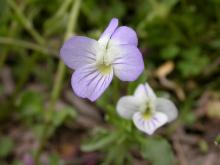
Species Types
Scientific Name
Viola bicolor
Description
Johnny-jump-up is a flat-faced violet whose small flowers are a washed-out blue or violet with a very light yellow or white center. Look for it in fields, meadows, glades, rights-of-way, disturbed sites, and possibly your front lawn.
Media

Species Types
Scientific Name
Claytonia virginica
Description
Our most widely distributed early spring flower, spring beauty has 5 white or pink petals with distinct pink veining, and 5 pink anthers. The narrow, bladelike leaves are fleshy. These flowers often grow in abundance, covering a patch of ground with the beauty of spring.
Media
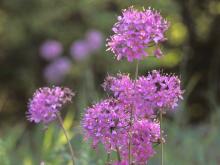
Species Types
Scientific Name
Allium stellatum
Description
Wild onion is edible and is also favored by native-plant gardeners, who enjoy its showy umbels of pink flowers and tolerance of dry, rocky sites. This Ozark species blooms in summer and fall.
Media
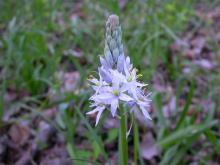
Species Types
Scientific Name
Camassia scilloides
Description
In spring, wild hyacinth bears an elongated cluster of pale blue flowers with prominent anthers that sway on stalks up to 2 feet tall.
Media
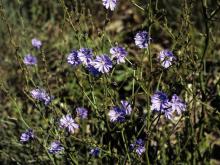
Species Types
Scientific Name
Cichorium intybus
Description
In summer and fall, the pretty blue flowers of chicory decorate roadsides and other disturbed areas. This weedy member of the aster family was introduced from Europe long ago. Its roots have been used as a coffee substitute.
Media
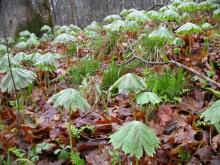
Species Types
Scientific Name
Podophyllum peltatum
Description
Mayapple is a common spring wildflower that makes its biggest impression with its leaves, which resemble umbrellas arising from a single stalk. It often grows in colonies.
Media

Species Types
Scientific Name
Astragalus crassicarpus (formerly A. mexicanus)
Description
Ground plum is a legume that bears plumlike, edible fruits. Its short, spikelike clusters of pea flowers can be white, cream, yellow, pink, or violet.
Media
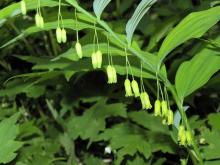
Species Types
Scientific Name
Polygonatum biflorum
Description
Solomon's seal grows statewide in moist, rich earth. The greenish-white flowers dangle like little bells beneath the leaves, under the gracefully arching stems.
Media

Species Types
Scientific Name
Pueraria montana
Description
Of the many invasive nonnative plants that were originally introduced to stop soil erosion and improve soils, kudzu is one of the worst. This “vine that ate the South” is often the first plant that comes to mind when we think of “invasive plants.”
See Also
About Wildflowers, Grasses and Other Nonwoody Plants in Missouri
A very simple way of thinking about the green world is to divide the vascular plants into two groups: woody and nonwoody (or herbaceous). But this is an artificial division; many plant families include some species that are woody and some that are not. The diversity of nonwoody vascular plants is staggering! Think of all the ferns, grasses, sedges, lilies, peas, sunflowers, nightshades, milkweeds, mustards, mints, and mallows — weeds and wildflowers — and many more!





















